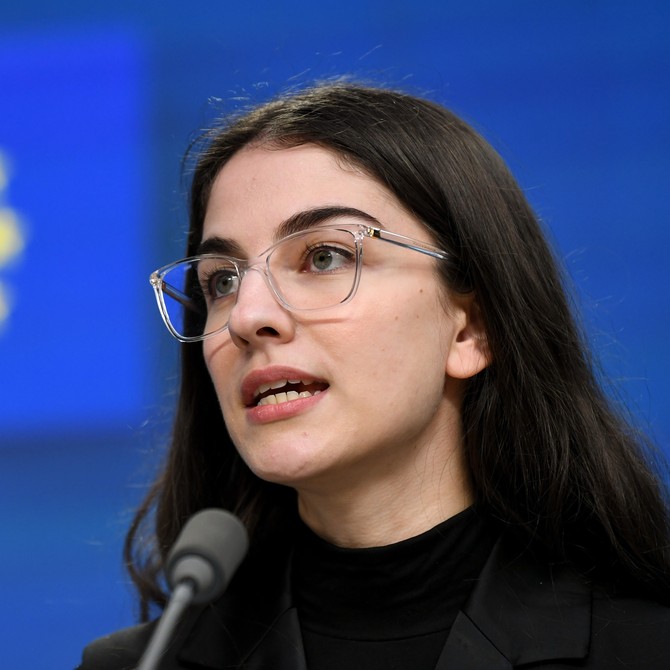Council adopts regulation on CO2 emissions for new cars and vans - ‘Fit for 55’
The Council today adopted a regulation setting stricter CO2 emission performance standards for new cars and vans. The new rules aim to reduce emissions from road transport that has the highest share of emissions from transport - and provide the right push for the automotive industry to shift towards zero-emission mobility while ensuring continued innovation in the industry.
The new rules set the following targets:
- 55% CO2 emission reductions for new cars and 50% for new vans from 2030 to 2034 compared to 2021 levels
- 100% CO2 emission reductions for both new cars and vans from 2035

I’m happy to see that the EU is delivering on it promises with the Fit for 55 package. The new rules will bring opportunities for cutting-edge technologies and create the momentum for industry to invest in a fossil-free future.
Romina Pourmokhtari, Swedish Minister for Climate and the Environment
A regulatory incentive mechanism for zero- and low-emission vehicles (ZLEV) will be in place from 2025 until the end of 2029. As part of this mechanism, if a manufacturer meets certain benchmarks for the sales of zero- and low-emission vehicles it can be rewarded with less strict CO2 targets. The benchmark is set at 25% for cars and 17% for vans.
The regulation contains a reference to e-fuels, whereby following a consultation with stakeholders, the Commission will make a proposal for registering vehicles running exclusively on CO2-neutral fuels, after 2035, in conformity with EU law, outside the scope of the fleet standards, and in conformity with the EU’s climate neutrality objective.
The regulation includes a review clause that foresees that in 2026, the Commission will thoroughly assess the progress made towards achieving the 2035 100% emission reduction targets and the possible need to review them. The review will take into account technological developments, including with regard to plug-in hybrid technologies and the importance of a viable and socially equitable transition towards zero emissions.
In addition, the regulation includes other provisions such as:
- gradually reducing the cap of emission credits that manufacturers can receive for eco-innovations that verifiably reduce CO2 emissions on the road, to maximum 4g/km per year from 2030 until the end of 2034 (currently set at 7g/km per year)
- a common EU methodology, to be developed by the Commission by 2025, for assessing the full life cycle of CO2 emissions of cars and vans placed on the EU market, as well as for the fuels and energy consumed by these vehicles
The regulation maintains a derogation for small volume manufacturers until the end of 2035.
Infografika – „Fit for 55“: Proč EU zpřísňuje standardy pro emise CO2 u osobních automobilů a dodávek?
 2 pro osobní automobily a dodávky spočívá, proč je důležitý a jaký je jeho očekávaný přínos pro občany, spotřebitele a automobilový průmysl EU." />Zobrazit celou infografiku
2 pro osobní automobily a dodávky spočívá, proč je důležitý a jaký je jeho očekávaný přínos pro občany, spotřebitele a automobilový průmysl EU." />Zobrazit celou infografikuBackground and next steps
The proposal revises existing rules, last amended in 2019. According to the regulation, every manufacturer must ensure that the average CO2 emissions from its fleet of newly registered vehicles in a calendar year do not exceed its specific annual emissions target. If they do, manufacturer must pay a premium of €95 per gram CO2/km above the target per vehicle registered. Consequently, with the new targets agreed, zero-emission vehicles will eventually become cheaper than vehicles running on fossil fuels.
The related revision of the deployment of an alternative fuels infrastructure (AFIR) will boost the development of an infrastructure for drivers to recharge their vehicles across the member states.
The proposal to revise the CO2 emissions performance standards for cars and vans is part of the ‘Fit for 55’ package. Presented by the European Commission on 14 July 2021, the package will enable the EU to reduce its net greenhouse gas emissions by at least 55% by 2030 compared to 1990 levels and to achieve climate neutrality in 2050.
The European Parliament adopted a series of amendments to the Commission proposal on 8 June 2022. The Environment Council reached a general approach on the proposal on 29 June 2022. After interinstitutional negotiations, the Council and the European Parliament reached a provisional political agreement on the proposal on 27 October 2022. The European Parliament adopted the regulation in first reading on 14 February 2023. The Council adoption today is the last step of the decision-making procedure. The regulation will now be published in the EU’s Official Journal and enter into force on the twentieth day following that of its publication.
- Regulation strengthening the CO2 emission performance standards for new passenger cars and new light commercial vehicles in line with the Union’s increased climate ambition
- Statements
- First ‘Fit for 55’ proposal agreed: the EU strengthens targets for CO2 emissions for new cars and vans (press release, 27 October 2022)
- Fit for 55 (background information)
Kontakt pro tisk
- Johanna Store
- Press officer
- +32 478 83 26 62
- +32 2 281 84 55
- @JohannaStore
Nepracujete-li pro média, obraťte se prosím se svým dotazem na službu informací pro veřejnost.
Poslední zprávy z rubriky Auto Moto:
Přečtěte si také:
Příbuzné stránky
- Alkohol - kalkulačka on-line
- Council adopts regulation on CO2 emissions for new cars and vans - ‘Fit for 55’
- Fit for 55: MEPs back CO2 emission standards for cars and vans
- Antitrust: Commission adopts new Vertical Block Exemption Regulation and Vertical Guidelines
- Commission adopts report on the functioning of the Money Market Funds Regulation (MMF)
- Czech republic: Government regulation on maximum number of applications for long-term business visas and employee cards
- Implementation of EU sanctions against Russia: Commission adopts proposal for “maintenance and alignment” package
- New European strategy for a Better Internet for Kids – Questions and Answers
- Questions and answers: Commission adopts Guidelines on collective agreements of self-employed people
Prezentace
18.11.2024 Nejlepší telefon za 2 990 Kč. Motorola má hit…
14.11.2024 Dosáhne Bitcoin 100 000 USD do konce roku?
Okénko investora

Olívia Lacenová, Wonderinterest Trading Ltd.
Jak trh reagoval na volby v USA? Historická maxima, ale i prudké propady

Radoslav Jusko, Ronda Invest

Petr Lajsek, Purple Trading

Jakub Petruška, Zlaťáky.cz
S návratem Donalda Trumpa zlato prudce klesá. Trhy zachvátila pozitivní nálada

Miroslav Novák, AKCENTA

Mgr. Timur Barotov, BHS

Jiří Cimpel, Cimpel & Partneři
Portfolio 60/40: Nadčasová strategie pro dlouhodobé investory

Ali Daylami, BITmarkets
Trump vs. Harris: komu majitelé kryptoměn coby voliči dají radši hlas?
Okénko finanční rady

Tomáš Vrňák, Ušetřeno.cz
Jak reagovat na konec smlouvy s dodavatelem? Pozor na vyšší ceny

Aleš Rothbarth, Skupina Klik.cz
Flotilové pojištění ušetří firemní finance i starosti, které se týkají služebních i soukromých cest

Marek Pokorný, Portu

Tomáš Kadeřábek, Swiss Life Select

Iva Grácová, Bezvafinance
Jak se připravit na nečekané výdaje: Tipy na vytvoření a správu nouzového fondu

Lukáš Kaňok, Kalkulátor.cz
Energie dál zlevňovat nebudou, vyplatí se fixovat aktuální ceny?

Martin Pejsar, BNP Paribas Cardif Pojišťovna






